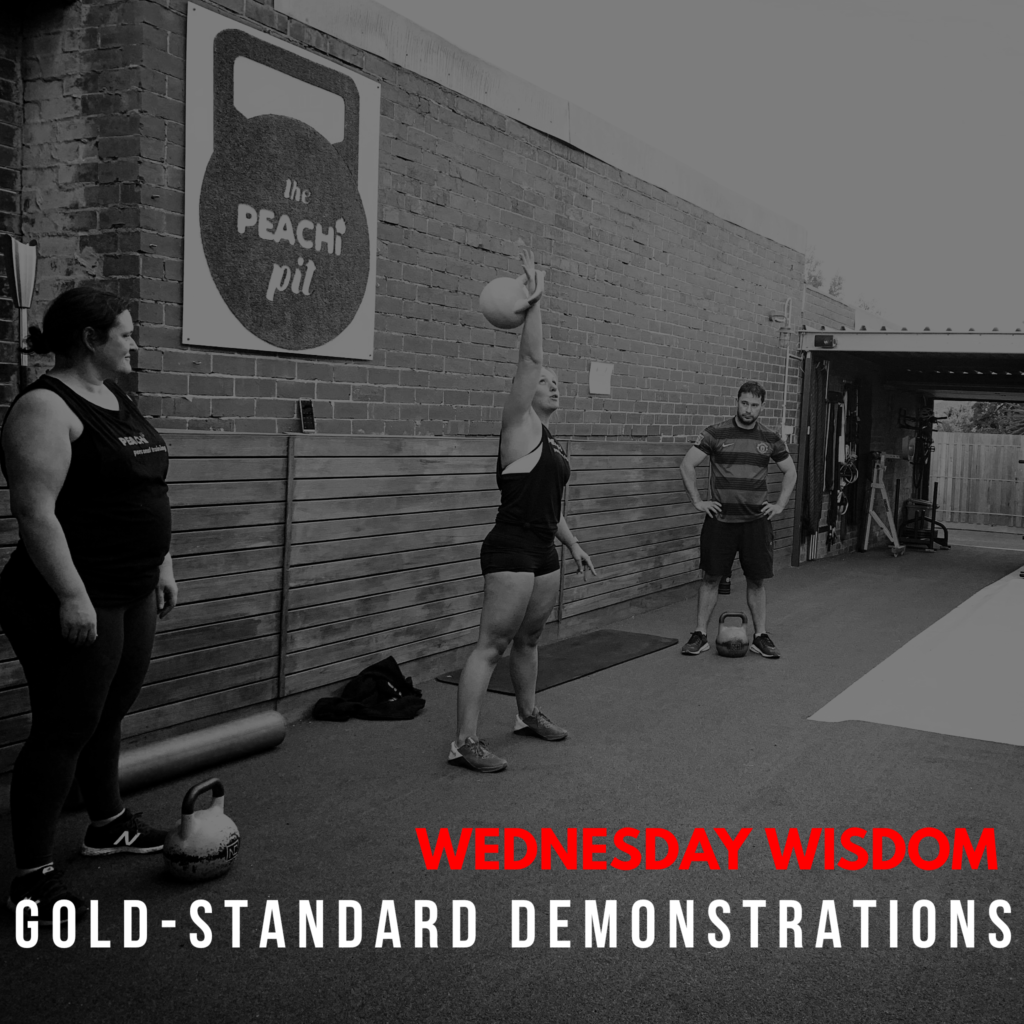Demonstrating movement – something we do every day!
But everyone listens, understands and learns differently, so how do we ensure we can be efficient and effective in teaching or tweaking a movement?
As coaches, it’s safe to say we usually have an in-depth understanding of the exercises we demonstrate and coach our clients in…
As coaches, most of us also have an in-depth understanding of anatomy as well as a good mind-muscle connection within our own bodies…
General population clients, however, come into the gym after a long day of work with a million things flying around in their heads and probably also have a list of things they need to get done when they get home after the session…
General population clients often don’t have an understanding of anatomy at all, some barely knowing their quads from their calves…
General population clients (particularly when newer to exercise or the style of exercise you teach) don’t have a strong mind-muscle connection…
‐———————
As coaches, we obviously want to help people move better and get the most out of an exercise, we are (hopefully) passionate about what we do, and we want to demonstrate our knowledge to our clients too. This combination of factors can easily lead to us wanting to share every detail and instruction about a movement we can think of while also demonstrating it at the same time – it’s natural for our brain to assume that by sharing all the information we will helping our client get a clearer understanding of what we want them to!
So while demonstrating a deadlift to a beginner you may end up sharing everything while simultaneously showing them…
“Stand with your feet shoulder-width apart, hinge forward at the hips and drive your hips back behind you so you feel tension in your hamstrings, keep the bar really close to your body so it’s almost scraping up your legs, keep your spine neutral and stand tall and close the gap between your hips and ribs at the top to activate your glutes and core and look at the horizon… or and don’t forget to corkscrew your feet into the floor too and try to break the bar to keep tension in your lats…”
For us, every part of that very longwinded sentence makes sense – it syncs with our knowledge and sounds perfectly logical!
For a beginner, this is more likely to be their inner dialogue as you say all that while showing the deadlift…
“Okay feet shoulder-width apart, got it. Tension in hamstrings… that’s the back of my legs, right? Spine neutral, I don’t know what that means… Activate core, great, how do I do that? Wow look how much weight that person over there is lifting compared to my tiny weights… Oh what did she just say about breaking bar? Oh god, what was the first step again?!”
Not to mention those clients we have under high levels of stress are probably making list in their head for what they have to grab from the supermarket at the same time as remembering they need to send a quick email or two.
It’s vital to consider the classic concept of KISS –
Keep It Super Stupid!!
Or more diplomatically put, Keep It Super Simple!!
Everyone learns in different ways, but most absorb information more effectively in one of the following ways:
Auditory (listening)
Visually (watching)
Kinaesthetically (doing).
Most people can’t take on information in multiple styles at once – the idea of “multitasking” does not work so well when it comes to learning a new skill!
Even then, most people have a short attention span and a lot of internal dialogue, so they need new information delivered simply and in small, staggered doses.
By demonstrating while explaining, or by explaining to them while they’re doing, it’s all just too much!!!
‐———————
To avoid overwhelming your client when you teach and ensure maximal understanding, try this sequence when teaching or modifying a new skill:
Name the exercise or highlight what you want to work on within that skill to draw their attention to the topic.
Demonstrate the movement – without talking – for 3 – 5 reps.
Give 2 – 3 key, simple, external cues to summarise what you want to see in that movement.
Demonstrate the movement again (without talking) for 3 -5 reps.
Ask them if they have any questions.
Let them try it, and don’t correct them for at least 3 reps (usually more) to let them sort their body out and action the cues you’ve explained.
Then, if they need more adjustment, add one more cue and let them try it again.
‐———————
This week, tune into how you demonstrate and let’s try to refine your process – where are you potentially overwhelming your client and where can you improve?
For me, remembering to stay quiet while demonstrating the movement is sometimes tough – but with practice I’m remembering to just be quiet more often
For for Newsletter

